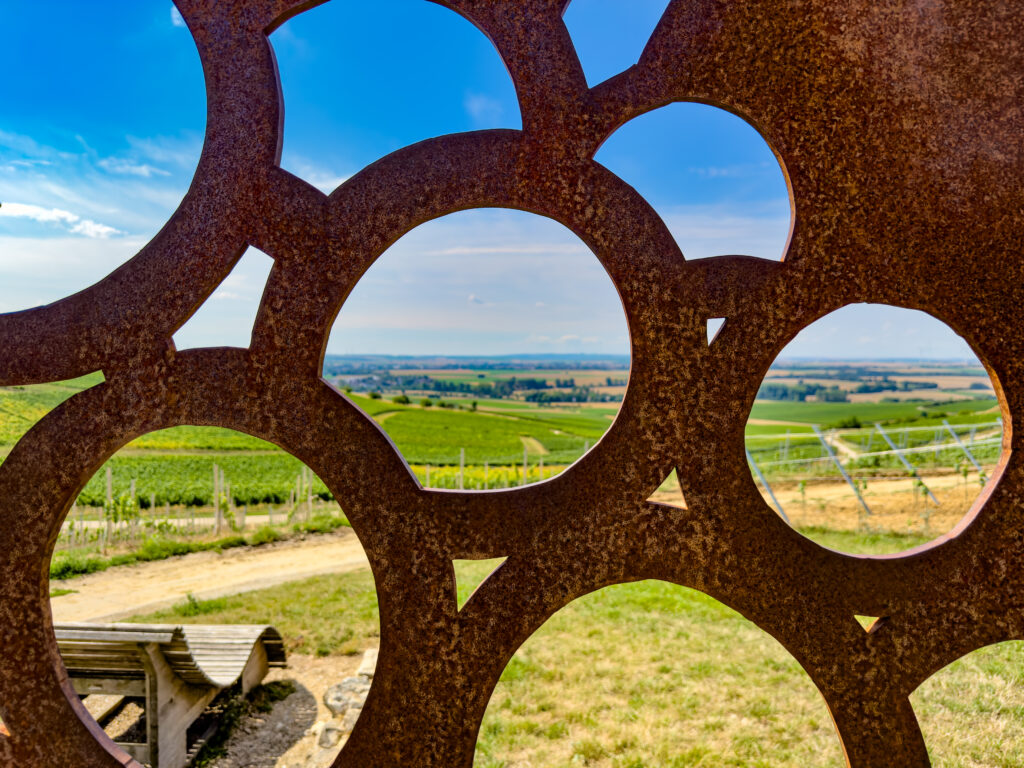We leave the lively wine village Guntersblum behind us and follow the RheinTerrassenWeg over the Rhine-Hessian villages of Ludwigshöhe and Dienheim. The magnificent distant views of this section reach far into the Rhine-Main region. But the good stuff is close at hand, because at the end, the beautiful silhouette of Oppenheim rises on the horizon. The medieval town is our next stop - both above and below ground. We'll tell you here what the police, Goethe and toads have to do with our experiences in Oppenheim.
The mystical Cellar Labyrinth
The old town of Oppenheim with its winding paths and narrow staircase alleys exudes a picturesque charm. We cross the central market square and meet Walter Lang at the town museum. He will descend with us into the Oppenheim underworld.
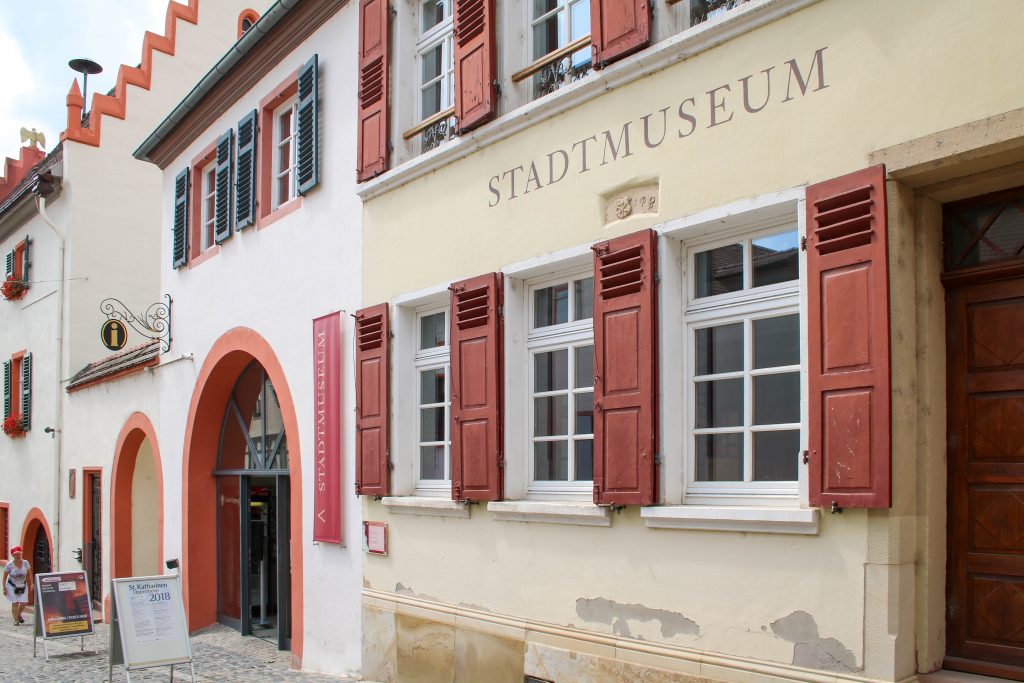
Walter Lang is by no means a ferryman, and there are no demons waiting in the Rhine-Hessian underworld - although we will hear one or two ghost stories. We explore with the tour guide the Oppenheim cellar labyrinth, a national cultural monument and unique system of underground passages and cellars. No less exciting than Hades!
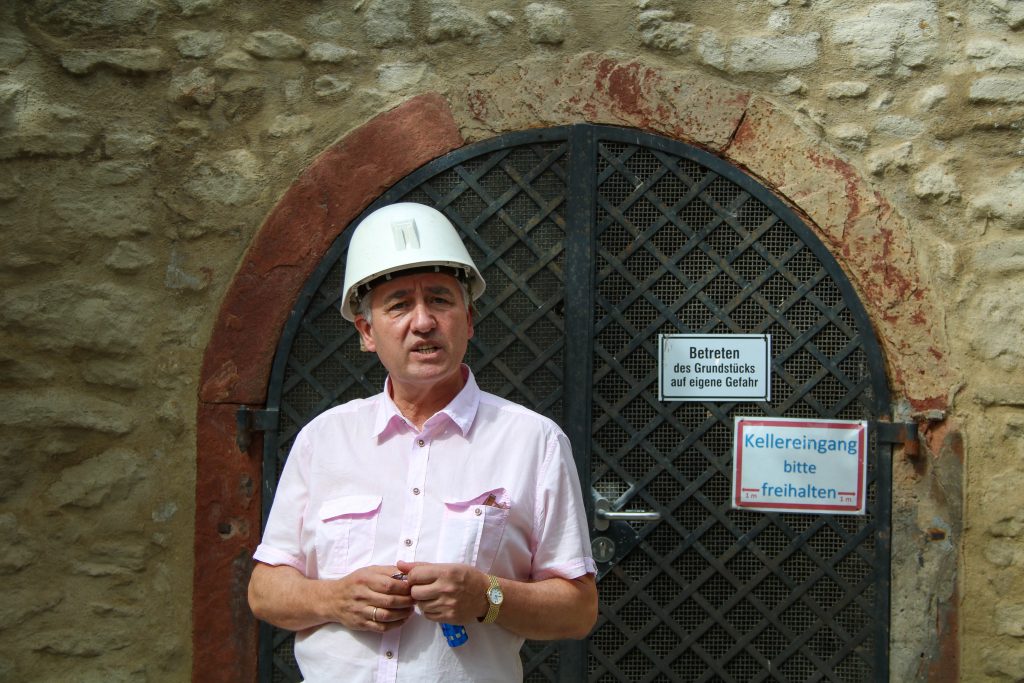
With summery-hot temperatures promises the upcoming descent promises a welcome cooling. First we are equipped with helmet and hood. Safety definitely comes before looks! While we feel feel like "Bob the Builder", Walter Lang tells us about the real builders of the underground cellars.
Approximately from the 11th to the 15th century the city was diligently built with cellars to create necessary storage space. In the Middle Ages, Oppenheim was an important trading town with market rights, goods handling customs and storage rights. By the way: Whoever dug first in those days owned the cellar. That's why grocers not infrequently undermined their neighbors in a hurry.
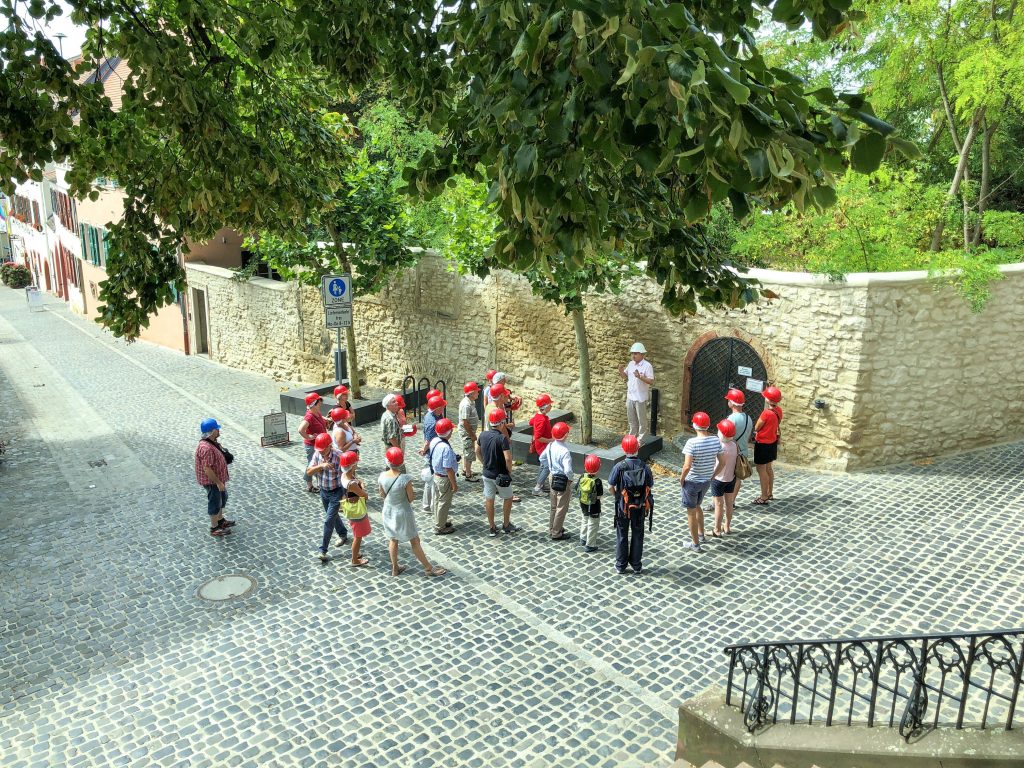
We descend the old stone staircase at the entrance to the of the labyrinth and immediately cool air surrounds us. What a relief! The temperatures between 16 and 18 degrees are pleasant in summer and winter. winter, Walter Lang enthuses. That is why the cellar labyrinth can be visited all year round.
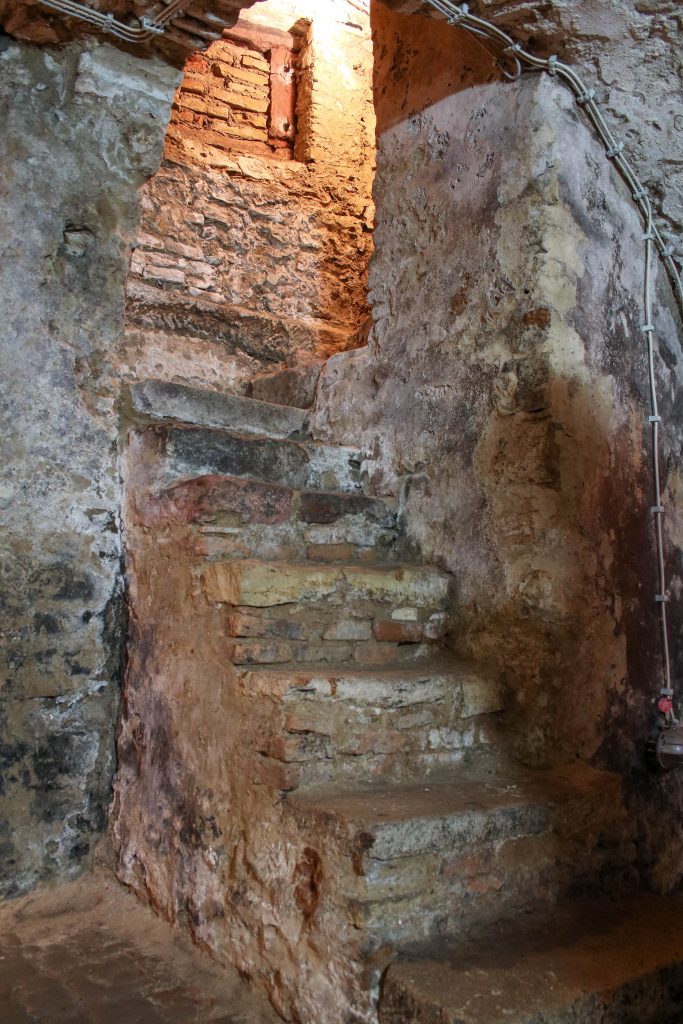
Deeper than the police allow
Our guide leads us through the the intricate corridors. Without him, we would probably be lost. The entire old town is covered with cellars - up to eight meters deep on several floors. Walter Lang, however, knows the "city beneath the city" like the back of his hand. He remembers that the underground system was used for many decades as a storage space used as a storage space for bulky waste and all kinds of scrap. Quasi as a carpet under which the garbage of history could be swept and forgotten. In 1986, however, the police came into play and put an end to this. Even if not as you might think now.

That year, a police car suddenly sank in the middle of the In the middle of the old town, a police car suddenly sank. The two patrolmen escaped with but the people of Oppenheim took the hole in the ground as an opportunity to do some research to investigate, clean up and, above all, secure. Over 500,000 buckets of debris from 500 years of history were excavated underground, including various shards, tiles, bones (not human bones!), chamber pots and even car bodies. car bodies. Walter Lang has to smile when he remembers one or the other "treasure". other "treasure".
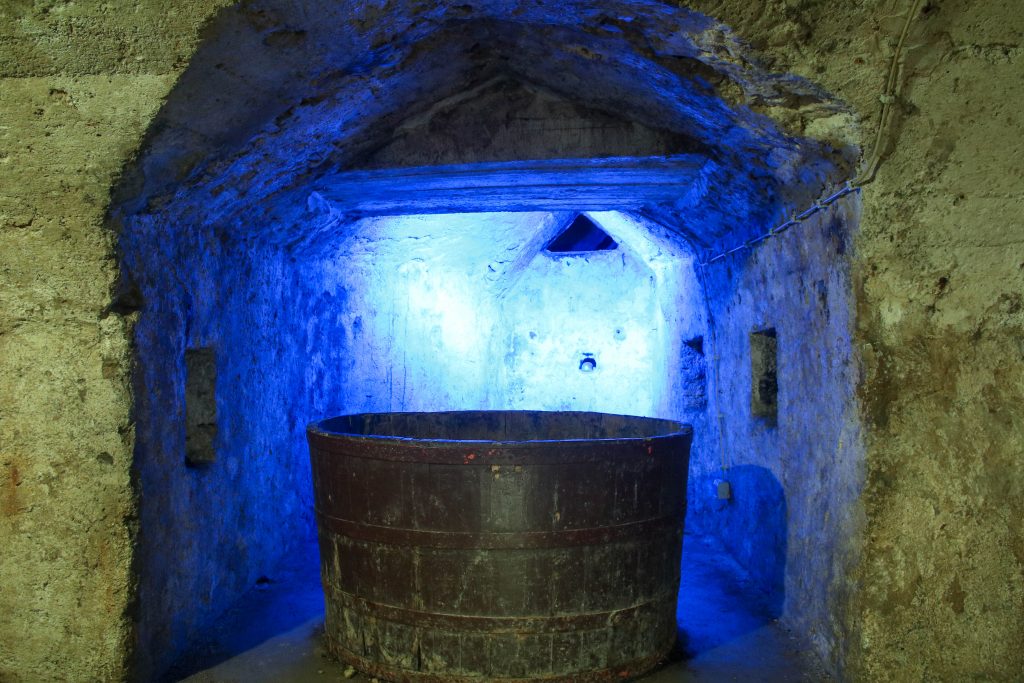
We are also diving deeper into the underground. In the meantime, it is difficult to tell how many meters have already been covered. If all 630 registered cellars were one after the other, we would have covered 30 kilometers. Almost half of our RheinTerrassenWeg. However, "only" about 750 meters are accessible to tourists on two tours. 750 meters are accessible to tourists.
We feel insecure at any time. And we don't have to, because "the cellars are the safest place in in Oppenheim and a good hiding place for its inhabitants," our guide promises. tour guide. He provides the proof immediately afterwards: In the last few centuries, the above-ground city has been destroyed many times by wars, fire and and earthquakes - and rebuilt. The cellars always remained intact. In fact, today they are the only clue to the medieval layout of Oppenheim. ground plan of Oppenheim.

A crypt, a lot of wine and sometimes pizza
Walter Lang can tell tell an incredible number of stories about the cellars and their owners. Mystical stories, as we stand in front of a wall that separates us from the crypt of St. Bartholomew's Church. Convivial stories, when in another cellar everything is ready for a wine tasting. Interesting Stories of the "Kulturkeller", where great events take place. And funny stories, such as the fact that at the cellar of the local pizzeria he sometimes pizzeria and that it is ready for him to pick up at the end of the cellar tour. ready for him to pick up.
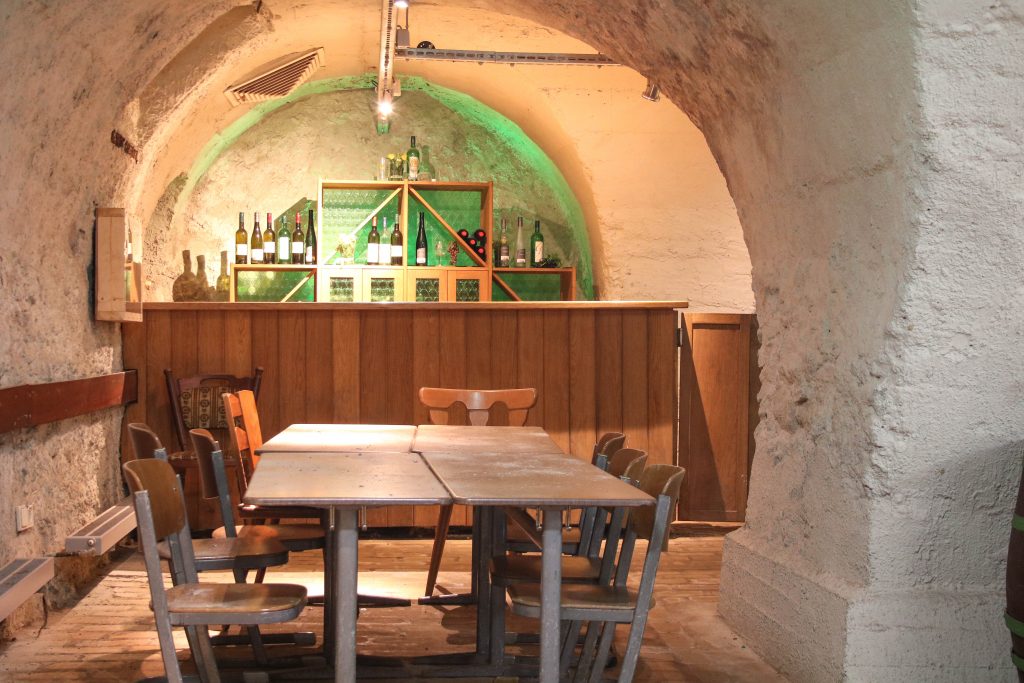
After about an hour we go up again. Our eyes have to get used to the bright sun after the dimmed light of the cellar. sun. We hand in our helmets. The many impressions and the and the fact that we have just stood on 800 year old ground. no one can take away from us.
Tip: On Halloween, the Oppenheim cellar labyrinth hosts special and especially popular events for young and old. The corridors and and cellars are atmospherically decorated and actors provide a scary and beautiful atmosphere under the earth.
The imposing St. Catherine's Church
In the immediate vicinity of the City Museum is the next destination of our stroll. The fascinating evangelic Katharinen church towers over the roofs of the old town and immediately captivates us. No wonder, since it is considered the most important Gothic sacred building between Cologne Cathedral in the north and Strasbourg Cathedral in the south.
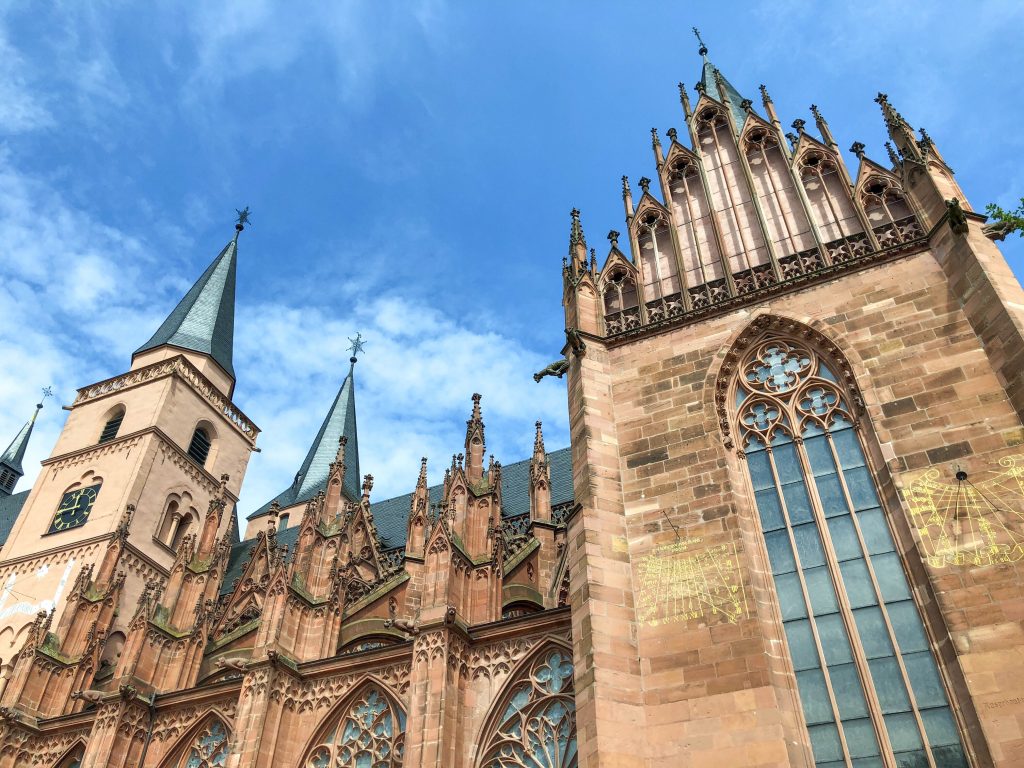
On the beautifully landscaped church square we admire the impressive the impressive sandstone facade and the golden sundials and planetary clocks. The interior of the church is no less magnificent. The large windows let a lot of light into the sanctuary on a day like today. From their even Goethe was impressed by their detailed and high-quality stained glass. How could we not be?
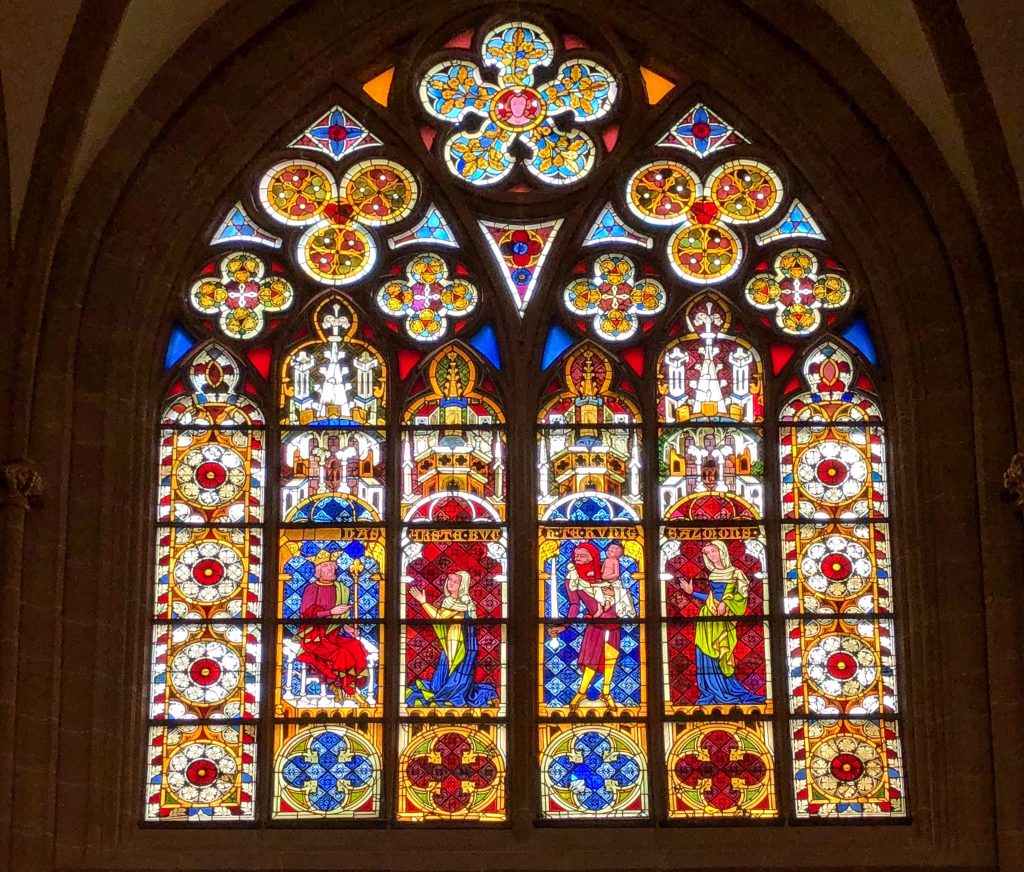
And while we are on the subject of important Germans are concerned: Max Reger and Albert Schweitzer once played in the Katharinenkirche on the historical the historic and highly esteemed Walcker organ and praised its poetic timbre. and praised its poetic timbre. In today's organ, old pipe material from that very instrument has been from this very instrument has been restored and integrated.
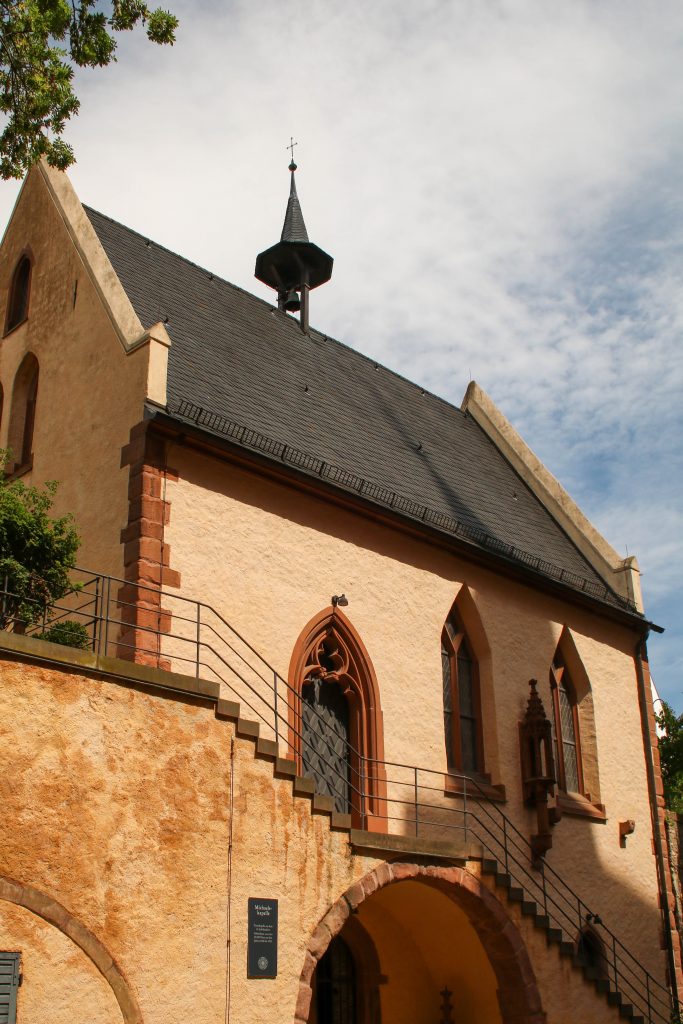
We stroll once around the St. Catherine's Church and marvel at the small St. Michael's Chapel in its shadow. Admittedly: The ossuary in the basement with its many stacked skulls and bones is certainly not for the for the faint of heart. But it is one of the few preserved buildings of this kind in of this kind in Rheinhessen and is definitely worth a look - how long is up to you. up to you.
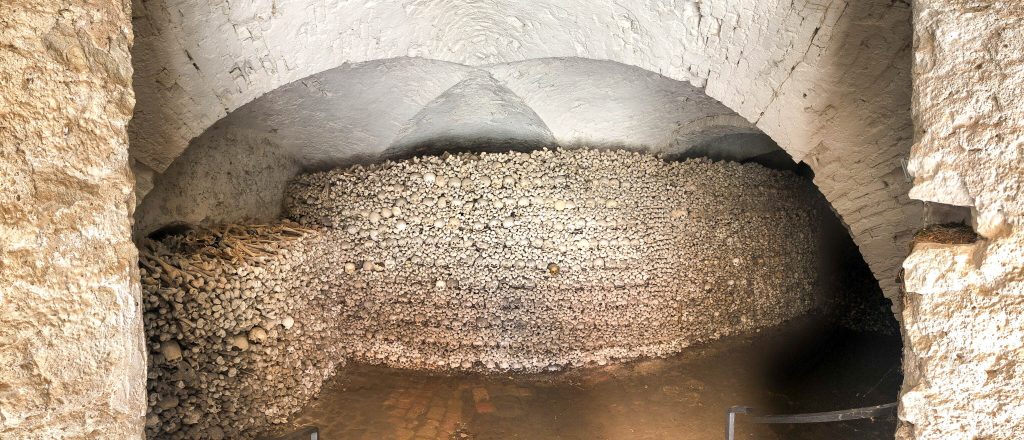
The humble Bartholomew Church
Now, of course, we do not want to miss the opportunity to take a look at the second church in Oppenheim. On the short short way there we notice many cellar entrances in the house facades of the old town. old town. Walter Lang mentioned them during our underground tour. tour. Fascinating that we have walked more or less the same way today - several meters once before - several meters underground.
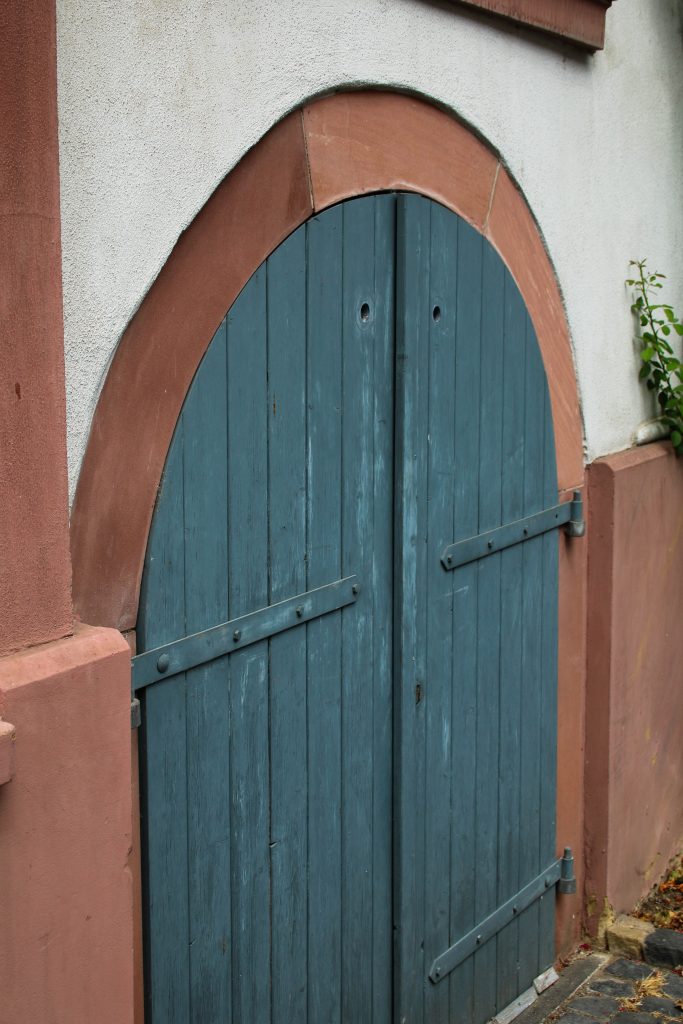
The Catholic Church of St. Bartholomew is situated below the market square and is seamlessly integrated into the winding old town. old town. It was founded in 1211 by the Franciscan order and is thus part of one of the oldest of the oldest Franciscan monasteries in Germany. The simple and clear and clear appearance of the church, as well as the lack of a side aisle, make it that it is a church of the mendicant order. We assume that this is also the reason why the church is so unexciting and almost a little hidden in the city center. in the city center.
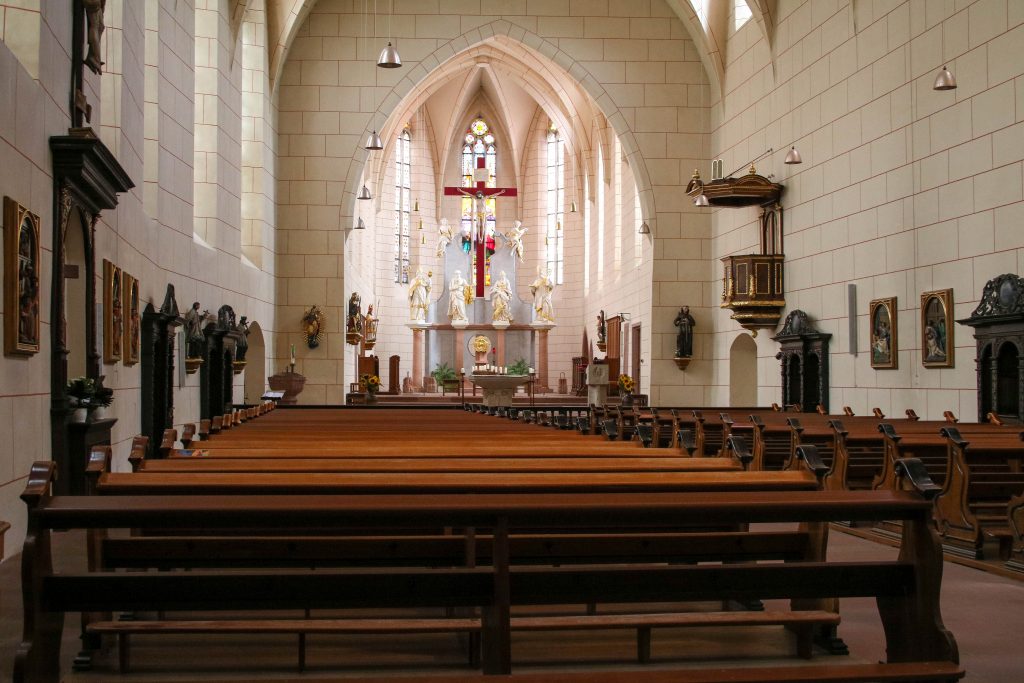
In the course of the Reformation the Franciscan monastery lost its importance. Of the original monastery structures next to St. Bartholomew's Church, only isolated remnants remain today.
To quack
On the RheinTerrassenWeg we hiked through the middle of the toad fountain above Oppenheim. Oppenheim. The famous vineyard owes its name to an old water system that originally This famous vineyard site owes its name to an old water system that originally served as the town's water supply. A 30 meters deep, which has since been shut down, collected rainwater there and and conducted it to Oppenheim.

In Oppenheim's old town there is also a "real" toad fountain, i.e. a fountain with cute, water-spouting toad figures. It is the last stop on our little stroll through town. After so many exciting impressions, it's high time for a drop of toad fountain - that is, a glass of wine of the Oppenheim winegrower course, not a glass of well water!


